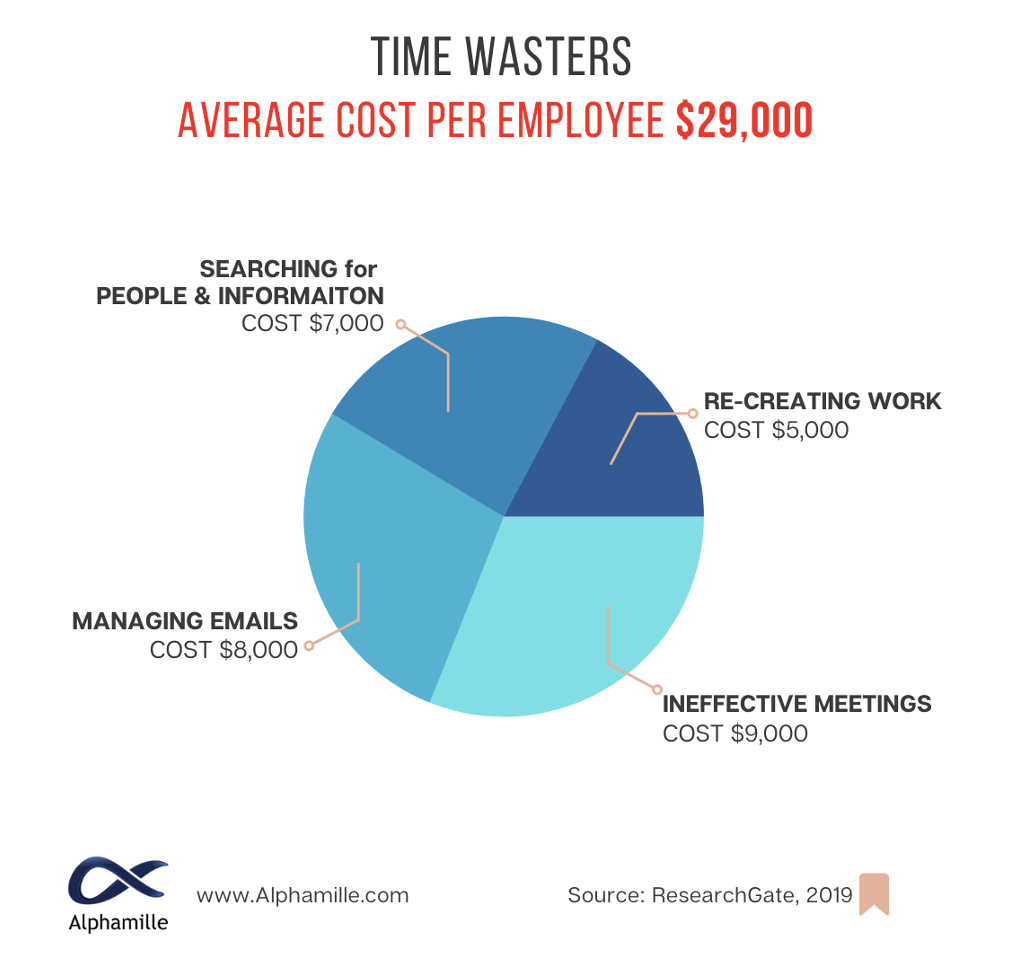
ADVANTAGES OF A DIGITAL WORKPLACE
By Victoria Koreneva
The term "Digital Workplace" was coined by Charles Grantham and Larry Nichols in 1993 (Perks, 2015). It was spearheaded by the Customer Relationship Management (CRM) and Enterprise Resource Planning (ERP) software, as well as productivity tools like email and calendar.
Studies show that coherent use of technology in the workforce increases productivity, improves communication across departments and disciplines, facilitates collaboration among coworkers or clients (especially when working remotely), and reduces employees stress levels because they can work on multiple projects without getting overwhelmed.
When built correctly, a digital workplace offers the following five advantages:
1. Increased Agility Through Flexible and Cost-effective Infrastructure
A properly built digital workplace should be designed as a flexible and cost-effective infrastructure which allows employees and stakeholders access information from any device, at any time. Data should be secured across different platforms. It's important for these tools to integrate video chatting features. Tools like Zoom and Microsoft Teams provide an effective way to collaborate, especially when some of the employees work remotely. Finally, the challenges of governance, risk and compliance must be resolved through a properly developed strategy and implementation.
Technology, agile work environment and collaboration are the backbone of the digital workplace (Constant 2017).
2. Improved Productivity
Improved productivity stems from task automation, modern (and constantly upgraded) infrastructure, a solid process for identifying and addressing inefficiencies, and continuous assessment of the current need for human capital and skills. Productivity can also result from creating virtual walls and removing distractions that would otherwise take up employees' time (Schubmehl, 2014).
A digital workplace has also been shown to increase staff satisfaction. A study by Gantz et al (2009), surveyed over 1500 workers across various industries about their experience with the company's new IT system, including its impact on productivity levels. More than 80% of respondents replied “yes” at some point during this survey. What’s remarkable, responses included increased engagement due to greater innovation opportunities or improved customer service.
Propel the company forward to a digital future.
3. Reduced Operating Costs & Increased Revenues
A well-build digital workplace has well-designed processes that cut down on paperwork and unnecessary meetings and emails. In fact, one recent study reported almost every measure showed significant gains when compared against traditional practices.
The pie chart below presents common time wasters that directly impact a company’s bottom line. Simple productivity improvements can save on average $29,000 per employee per year.
a). Make meetings efficient. An average employee attends around 62 meetings per month and spends over 30 hours a week in discussions that could have been avoided. According to a research study by Infocom (2018), as much at 50% of time spent during office presentations or conferences is wasted because people daydream while listening, at the average annual cost of $9,000 per employee.
b). Make email management efficient.
Email management consumes almost 7 hours per week, and 33% of this time involves replying to messages. The average cost per employee is estimated at $8,000. (Schubmehl 2014).
c). Make search efficient.
A 2015 survey conducted by Schubmehl and Associates revealed that employees spend 2.5 hours a week searching for internal people and information the company, at an average cost of $7000 annually. A well-designed CRM and document management system can bring this cost down.
d). Make re-creating work unnecessary.
The time spent on re-doing work that had already been done costs companies $5,000 per employee every year (Schubmehl 2014).
At a time when employees struggle to balance work life and personal obligations, integrating digital technologies into the workplace results in much-needed productivity improvements. In 2015, Wakefield Research surveyed 500 global C-level executives and IT decision makers across seven countries regarding the advantages of a truly "digital" workspace. Ease of communication and reduced costs were some of the benefits cited.
4. Improved Culture & Morale
Transparency is another desirable outcome of a digital workplace. When all employees can see what their peers are doing, it creates an environment where staff members become more efficient and effective at work – there is less of a need to follow up. Culture matters, and management that realizes the benefits and impact of creating a digital workplace for their existing employees will end up with a happier and more loyal workforce. When employees and consultants have the flexibility of working from home at least some of the time, thus eliminating their time commuting to/from work, they will ultimately improve their work-life balance.
Using collaboration tools is another important part of a digital workplace. By providing employees with the tools they need for efficient communication, companies can create a collaborative culture that promotes creativity within each individual person's work environment and cuts down on meetings.
Flexible work arrangements and digital workplaces can make employees happier, healthier and more satisfied on the job, leading to better retention rates. In a survey of 407 HR professionals by Society for Human Resource Management, 80% of respondents classified flexible or remote working as a good practice.
5. Strengthen Talent Acquisition and Retention
The digital workplace allows companies to tap into hiring talent, outsourcing a project or building a center of excellence in a remote location (for example, in Eastern Europe, Latin America, or India), thus sourcing the necessary skills, reducing costs, and improving diversity.
Data from a recent study shows that the digital workplace can help employees collaborate in ways that make the most sense and enable businesses to save money and increase productivity and innovation. Other benefits of creating a digital workplace include revenue growth as well as increased engagement with company culture (Avanade 2017).
The advantages of implementing a digital workplace include increased productivity, business agility and employee retention. Nonetheless, some serious business concerns arise alongside with these technological advancements.
Is your company’s data secure? Are your systems robust enough to protect your business from experiencing any security breaches due to increased risks? Do you have all the necessary policies in place that govern the exchange of information among departments, dispersed offices, and remote workers? Have you begun the digital transformation of your company? If no, do you know where to begin?


